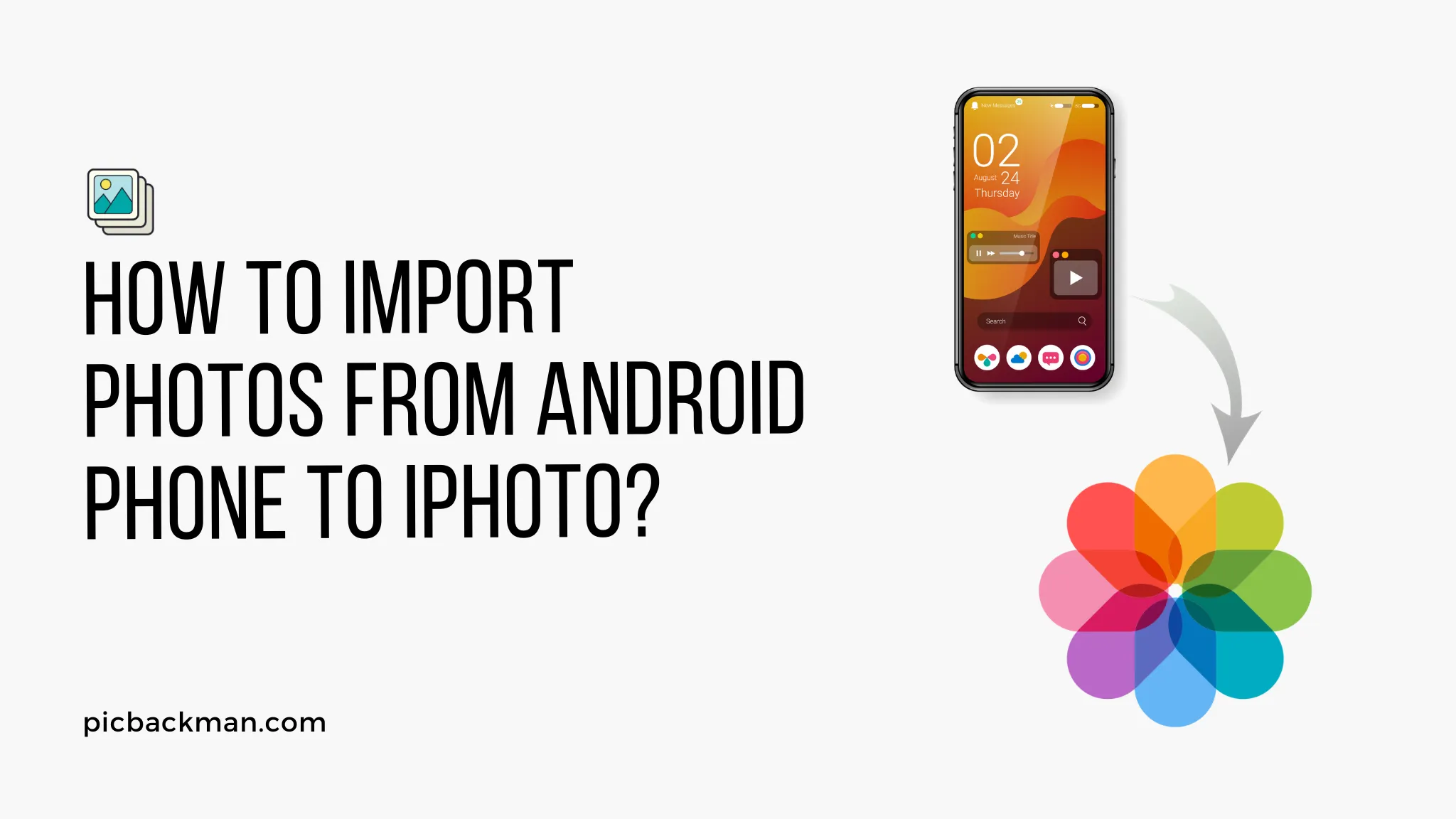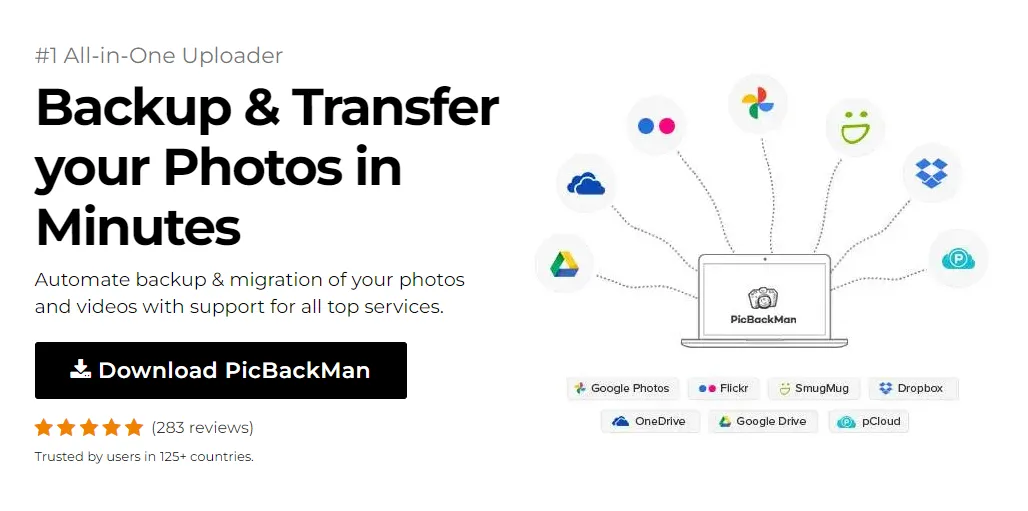
How to Import Photos from Android Phone to iPhoto?


Transferring photos from your Android phone to your Mac computer allows you to edit, organize and back up your images using powerful photo management apps like iPhoto. While it may seem daunting at first, importing pictures from an Android device to iPhoto is straightforward once you know the steps.
In this comprehensive guide, we will walk through the entire process of moving photos from an Android smartphone or tablet to iPhoto on a Mac. Whether you want to transfer just a few selected images or your entire camera roll gallery, we've got you covered.
Prerequisites
Before starting the transfer process, make sure you have the following:
- An Android phone or tablet with photos you want to import
- A Mac computer with iPhoto installed
- A USB cable to connect your Android device to the Mac
- If your phone does not have a USB port, you will need an adapter like a USB-C to USB or microUSB to USB adapter
Also, enable USB debugging mode on your Android device. This allows the Mac to recognize and access its storage when connected.
Connect Android Phone to Mac
-
Use the USB cable that came with your Android phone and connect it to your Mac computer. Plug one end into the charging port on your phone and the other end into an open USB port on the Mac.
-
A notification should appear on your Android device prompting you to Select USB Configuration. Choose "File transfer" or "MTP" from the options. This allows the Mac to access the files on your phone.
-
Swipe down from the top and check if a "USB charging this device" notification is present. Tap on it and select "File transfer/Android Auto" to enable file transfer mode.
-
Your Android phone storage should now be accessible from the Mac.
Locate Photos on Android Device
-
On your Mac, launch Finder if it isn't already open.
-
In the Finder sidebar, look under Locations and select your connected Android device. It will likely be labeled with the phone manufacturer's name.
-
Navigate to the DCIM folder. This is where your camera photos are stored by default. If you store pictures anywhere else, navigate there instead.
-
You can now view thumbnails of the photos on your Android device within the Finder window.
Select Photos to Import
-
Browse through the photos and select the ones you want to import.
-
To select a single image, simply click on its thumbnail. To select multiple pictures, hold down the Command key while clicking.
-
You can also click and drag to select a group of adjacent photos.
-
All selected photos will have a blue border around their thumbnails.
-
To deselect, click away or Command-click a selected thumbnail again.
Copy Photos to iPhoto
-
With the desired photos selected in Finder, press Command-C to copy them.
-
Open iPhoto on your Mac. Make sure the Library view is selected.
-
In iPhoto, choose File > Import to Library... Alternatively, press Shift-Command-I.
-
In the import dialog box, press Command-V to paste the photos from your Android device.
-
Select the Copy items into iPhoto check box. This imports the photos instead of just referencing their original location.
-
Click Import.
-
The Android photos will now be transferred into your iPhoto library! Verify by checking the Last Import smart album.
Alternative Method: Import Entire Camera Roll
Instead of selecting individual photos, you can also import your entire Android camera roll in one go:
-
With your device connected to the Mac, open Image Capture instead of iPhoto. It's located in Applications -> Image Capture.
-
In the sidebar, select your Android device under Devices.
-
In the main Image Capture window, select all photos by pressing Command-A.
-
Click Import To and choose iPhoto.
-
Click Import All to transfer the entire camera roll to iPhoto in one batch.
This method is quicker but won't allow you to select specific images to import.
Transfer Photos Without USB
Do not have a USB cable? No problem! You can wirelessly transfer photos from your Android device to the iPhoto app using the following methods:
Use AirDrop
-
Enable Wi-Fi and Bluetooth on both devices. Also enable AirDrop on the Mac under Finder -> AirDrop.
-
On Android, open the photo and tap the Share button.
-
Choose AirDrop from the sharing options.
-
Select your Mac from the list of AirDrop receivers and confirm.
-
Accept the transfer request on your Mac. The photo will be saved to the Downloads folder.
-
Open Downloads in Finder, select the image file, and drag it directly into iPhoto.
Email Photos to Yourself
-
On your Android device, open the photo you want to transfer.
-
Tap the Share button and choose Email.
-
Compose a new email and attach the photo. Send it to your own email address linked to the Mac.
-
When the email arrives in your Mac's Mail app, double click to download the attached photo.
-
Drag the downloaded image file from the Downloads folder directly into your iPhoto library.
Use Cloud Storage
You can also upload photos from your Android device to cloud storage platforms like Google Photos or Dropbox, and then access them on your Mac to import into iPhoto.
Edit Transferred Photos in iPhoto
The beauty of moving your pictures to iPhoto is that you can now use its extensive editing tools to enhance images:
-
Crop and Rotate: Fix composition issues by cropping and rotating photos.
-
Adjust Color: Improve brightness, contrast, saturation etc. to make colors pop.
-
Remove Red Eye: Instantly remove annoying red eyes from flash photography.
-
Enhance: Let iPhoto automatically fine tune a photo's light levels, color balance, etc.
-
Effects: Apply cool effects like black & white, vintage, sepia etc.
-
Retouch: Remove blemishes and imperfections using the repair tool.
-
Brush Tools: Use red eye, saturate and desaturate brushes for local adjustments.
-
Titles: Add text captions to your photos.
-
Borders: Frame photos with attractive borders.
Quick Tip to ensure your videos never go missing
Videos are precious memories and all of us never want to ever lose them to hard disk crashes or missing drives. PicBackMan is the easiest and simplest way to keep your videos safely backed up in one or more online accounts. Simply Download PicBackMan (it's free!), register your account, connect to your online store and tell PicBackMan where your videos are - PicBackMan does the rest, automatically. It bulk uploads all videos and keeps looking for new ones and uploads those too. You don't have to ever touch it.
Organize and Manage Photos in iPhoto
Aside from power editing, iPhoto makes it easy to manage and organize your growing photo collection:
-
Events: Have iPhoto automatically sort photos into Events by date and location.
-
Albums: Manually group photos into custom albums.
-
Faces: Tag people in photos to have iPhoto automatically detect faces.
-
Places: Add geographical location info and view photos on a world map.
-
Keywords: Assign tags to easily search and filter photos by keyword.
-
Star Ratings: Rate your favorite shots with 1-5 star ratings.
-
Smart Albums: Create dynamic albums based on search criteria that auto-update.
-
Photo Stream: Automatically sync photos across Apple devices.
Back Up Android Photos on Mac
Once the photos are on your Mac, it's important to have backups in case of data loss. Here are some backup options:
-
Use iPhoto's Export function to save copies of the photos to an external hard drive.
-
Sync iPhoto with cloud storage like iCloud to create online backups.
-
Use Time Machine to back up your entire iPhoto library.
-
Burn your iPhoto albums to DVDs or CDs for archival.
-
Enable iPhoto's built-in backup to copy your library to a second internal or external drive.
Troubleshoot Issues Importing from Android
Still having issues transferring photos from your Android device to the iPhoto app on Mac? Try these troubleshooting tips:
-
Reconnect the USB cable and retry.
-
On Android, disable USB debugging, clear app defaults for the File transfer dialogue box, re-enable USB debugging, and reconnect.
-
Switch to a different USB cable and port on your Mac.
-
On Android, check that MTP mode is enabled in USB preferences.
-
Restart both the Android device and the Mac.
-
Update iOS and Android OS to the latest versions.
-
Disable photo sync to cloud services on Android during transfer.
-
Double check if iPhoto has full disk access permissions in Mac System Preferences.
-
As a last resort, use Android File Transfer instead of Finder, or a third-party wireless transfer app.
Frequently Asked Questions
Below are answers to some common questions about transferring photos from Android to iPhoto:
Q: How do I transfer photos from my old Android phone to a new iPhone and import them into the Photos app?
A: Connect your Android device to the Mac using a USB cable. Open Image Capture and select the device. Choose to import all photos to the Photos app. This will transfer the images to the Mac. Now connect your iPhone, choose it in Image Capture, and click "Import to this device" to move the photos. Open Photos on your iPhone to access the imported pictures.
Q: Can I select individual photos to import from my Android tablet to iPhoto?
A: Yes, the Finder method mentioned above allows you to select specific photos to copy from your Android tablet to the iPhoto library on your Mac. You don't have to import the entire camera roll.
Q: How long does it take to import all my photos from Android to iPhoto?
A: The import time will depend on the number and size of photos being transferred, as well as the connection speed between your devices. For a few hundred photos, expect the transfer to complete in under 5 minutes. Thousands of high-resolution images can take over an hour.
Q: What image formats can I import into iPhoto from Android?
A: iPhoto supports all major image formats like JPG, PNG, RAW, TIFF, BMP, and GIF. Any photo taken on your Android device can be imported into iPhoto.
Q: What happens to my photos on Android after importing them to iPhoto?
A: The original images will remain untouched on your Android device after they are copied over to your Mac. Nothing is deleted or moved unless you manually delete the photos or set up automatic photo deletion.
Q: Can I import photos directly from an Android phone to iPad?
A: Unfortunately iOS apps like iPhoto and Photos cannot directly import photos from an Android device. You will need a Mac as an intermediate step. Import to the Mac first, then sync or transfer to iPad.
Conclusion
Importing photos from your Android device into iPhoto is a simple drag and drop process using the USB, wireless, or cloud method. Once transferred, you can leverage iPhoto's suite of photo editing tools and organizational features to wrangle your photo collection. Remember to back up the imported images, and get ready to enjoy your Android photos like never before on the Mac platform!
Backup & Transfer your Photos in Minutes
Automate backup & migration of your photos & videos with support for all top services.
Trusted by users in 125+ countries.










